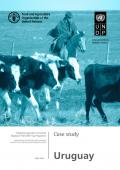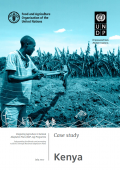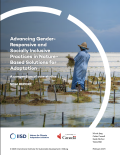
This case study chronicles Uganda’s experiences developing a gender‑responsive National Adaptation Plan for the Agricultural Sector (NAP-Ag) and related capacity development for gender-responsive planning, budgeting and policy formulation. Lessons learned from these endeavors can provide insights for other countries who are seeking, like Uganda, to align NAP or agricultural sector NAP efforts with national goals as well as the Paris Agreement (Article 7.5), which mandates gender-responsive adaptation actions and capacity-building activities.
Highlights
Uganda’s experiences developing a gender‑responsive NAP-Ag and related adaptation actions suggest the need to:
- Engage a deliberate gender lens at every level to identify and analyse gender gaps and build on qualitative and quantitative evidence of gender‑based vulnerabilities and impacts.
- Recognize the important role of women, men and youth as change agents in agricultural adaptation, not only as vulnerable groups.
- Address structural gender challenges, unequal gender relations and power dynamics, including the lack of ownership of land and other production assets, unequal division of labour and inequitable decision‑making, that inhibit adaptation technologies and practices by women.
- Align with national gender plans and other related policies, such as finance, planning and climate change, and global climate and development goals and agreements (e.g. Paris Agreement, Sustainable Development Goals).
- Stipulate clear gender-responsive actions with a costed genderresponsive budget and a gender‑responsive performance monitoring framework.
- Strengthen stakeholder capacity, supported by gender experts, to address gender in adaptation planning processes.




